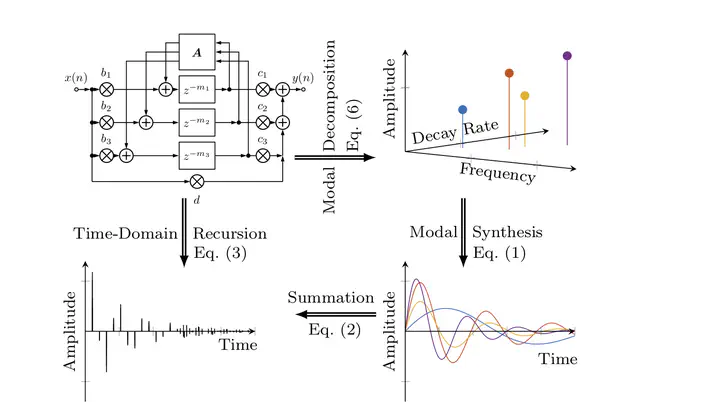Optimized Feedback Delay Networks

Feedback Delay Networks (FDNs) are one of the most efficient methods to synthesize artificial reverberation. Although high-order FDNs can achieve high-quality results, they also tend to be too dense and have increased computational complexity. On the contrary, low-order FDNs exhibit (if not carefully tuned) metallic and unpleasant resonances. This work aims to investigate the mathematical properties necessary for FDNs to achieve lush and colorless reverberation. In previous work, we have presented a sophisticated method for identifying all resonating modes (up to a million simultaneously) and residual energy. Based on this modal decomposition, this work attempts to optimize the feedback structure, both feedback matrices, and delays, and connect its properties to a perceptual metric.